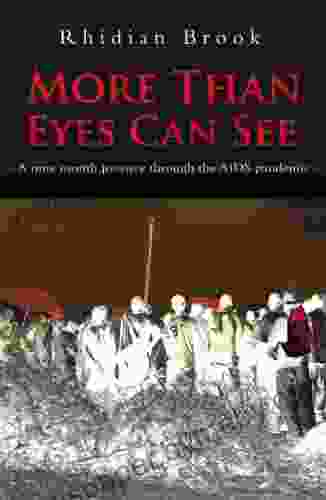Masada: From Jewish Revolt to Modern Myth

4.6 out of 5
| Language | : | English |
| File size | : | 69267 KB |
| Text-to-Speech | : | Enabled |
| Screen Reader | : | Supported |
| Enhanced typesetting | : | Enabled |
| Word Wise | : | Enabled |
| Print length | : | 394 pages |
The story of Masada is one of the most iconic and enduring in Jewish history. In 73 CE, a group of Jewish rebels held out against the Roman army for over two years at the fortress of Masada, located on a high plateau in the Judean Desert. The siege ended in tragedy, with the rebels committing mass suicide rather than surrendering to the Romans.
Masada has become a symbol of Jewish resilience and determination, and its story continues to be told and retold today. It has been the subject of numerous books, films, and other works of art. In this article, we will explore the history of Masada, from its origins as a Jewish fortress to its modern-day status as a UNESCO World Heritage Site.
The Jewish Revolt
The Jewish Revolt against the Roman Empire began in 66 CE. The rebels were motivated by a number of factors, including Roman taxation policies, the presence of Roman troops in Judea, and the perceived threat to Jewish religious freedom. The revolt was initially successful, and the rebels were able to drive the Romans out of Jerusalem. However, the Romans eventually regained control of the city, and the revolt was crushed in 73 CE.
During the revolt, a group of Jewish rebels led by Eleazar ben Yair seized the fortress of Masada. Masada was a strategically important location, as it overlooked the Dead Sea and the main road between Jerusalem and Jericho. The rebels held out against the Romans for over two years, but they were eventually defeated. According to the Jewish historian Josephus, the rebels committed mass suicide rather than surrendering to the Romans.
The story of the siege of Masada has become a powerful symbol of Jewish resistance to oppression. It has been used to inspire Jews throughout history, and it continues to be a popular tourist destination today.
Archaeological Excavations
The first archaeological excavations at Masada were conducted in the 1960s by a team led by Yigael Yadin. Yadin's team uncovered the remains of the fortress, including the walls, towers, and living quarters. They also found a number of artifacts, including weapons, pottery, and coins. Yadin's excavations helped to shed light on the history of Masada and the Jewish Revolt.
In the 1990s, a second team of archaeologists led by Ehud Netzer began excavating Masada. Netzer's team discovered a number of new artifacts, including a large collection of ostraca (inscribed potsherds). These ostraca provide valuable information about the daily life of the rebels who lived at Masada.
The archaeological excavations at Masada have helped us to gain a better understanding of the history of the fortress and the Jewish Revolt. They have also helped to preserve the site for future generations.
Masada Today
Masada is now a UNESCO World Heritage Site. It is a popular tourist destination, and visitors can explore the remains of the fortress and learn about its history. Masada is also a symbol of Jewish resilience and determination, and it continues to inspire people around the world.
The story of Masada is a powerful reminder of the Jewish people's struggle for freedom and independence. It is a story that has been told and retold for centuries, and it continues to inspire people today. Masada is a UNESCO World Heritage Site, and it is a popular tourist destination. It is a place where visitors can learn about the history of the Jewish people and the importance of freedom and independence.
4.6 out of 5
| Language | : | English |
| File size | : | 69267 KB |
| Text-to-Speech | : | Enabled |
| Screen Reader | : | Supported |
| Enhanced typesetting | : | Enabled |
| Word Wise | : | Enabled |
| Print length | : | 394 pages |
Do you want to contribute by writing guest posts on this blog?
Please contact us and send us a resume of previous articles that you have written.
 Book
Book Novel
Novel Page
Page Chapter
Chapter Text
Text Story
Story Genre
Genre Reader
Reader Library
Library Paperback
Paperback E-book
E-book Magazine
Magazine Newspaper
Newspaper Paragraph
Paragraph Sentence
Sentence Bookmark
Bookmark Shelf
Shelf Glossary
Glossary Bibliography
Bibliography Foreword
Foreword Preface
Preface Synopsis
Synopsis Annotation
Annotation Footnote
Footnote Manuscript
Manuscript Scroll
Scroll Codex
Codex Tome
Tome Bestseller
Bestseller Classics
Classics Library card
Library card Narrative
Narrative Biography
Biography Autobiography
Autobiography Memoir
Memoir Reference
Reference Encyclopedia
Encyclopedia Joan Lowery Nixon
Joan Lowery Nixon Satchin Panda
Satchin Panda Joann Fletcher
Joann Fletcher Scott Knickelbine
Scott Knickelbine John Alexander
John Alexander Julia E Clements
Julia E Clements Jim Reeves
Jim Reeves John Bingham
John Bingham Jim Dent
Jim Dent Karrine Steffans
Karrine Steffans Jodi Kantor
Jodi Kantor Robert Courland
Robert Courland Laura Alary
Laura Alary Murisa Harba
Murisa Harba Joanne Simon Walters
Joanne Simon Walters Joe Hammond
Joe Hammond Shaughnessy Haynes
Shaughnessy Haynes Jim Murdoch
Jim Murdoch Tim Howard
Tim Howard John Lee Dumas
John Lee Dumas
Light bulbAdvertise smarter! Our strategic ad space ensures maximum exposure. Reserve your spot today!

 Herman MelvilleElevate Your GCSE Physical Education Studies with Edexcel GCSE PE Third...
Herman MelvilleElevate Your GCSE Physical Education Studies with Edexcel GCSE PE Third... Federico García LorcaFollow ·18.6k
Federico García LorcaFollow ·18.6k Kenzaburō ŌeFollow ·5.3k
Kenzaburō ŌeFollow ·5.3k Edgar HayesFollow ·4.6k
Edgar HayesFollow ·4.6k Dwight BlairFollow ·19.9k
Dwight BlairFollow ·19.9k Norman ButlerFollow ·14.4k
Norman ButlerFollow ·14.4k Jack PowellFollow ·13.8k
Jack PowellFollow ·13.8k Dalton FosterFollow ·13.7k
Dalton FosterFollow ·13.7k Derek CookFollow ·18.9k
Derek CookFollow ·18.9k

 Jermaine Powell
Jermaine PowellThe Ultimate Guide to Unlocking Consistent Profitable...
Introducing the 2nd Edition of the...

 Yasunari Kawabata
Yasunari KawabataMinute Microskills Videos: The Ultimate Guide for Visual...
Unlock Your Potential with Bite-Sized Video...

 Nathan Reed
Nathan ReedUnveiling the Wonders of Yosemite through John Muir's...
Immerse yourself in the breathtaking beauty...

 Gabriel Garcia Marquez
Gabriel Garcia MarquezWhen You Find Me Novel: A Gripping Mystery Unravels
In the sleepy...

 Esteban Cox
Esteban CoxMountains of California: An Essential History of...
From the towering...

 Devin Ross
Devin RossComm Check: Unveiling the Heartbreaking Final Flight of...
Comm Check: The Final Flight of Shuttle...
4.6 out of 5
| Language | : | English |
| File size | : | 69267 KB |
| Text-to-Speech | : | Enabled |
| Screen Reader | : | Supported |
| Enhanced typesetting | : | Enabled |
| Word Wise | : | Enabled |
| Print length | : | 394 pages |










